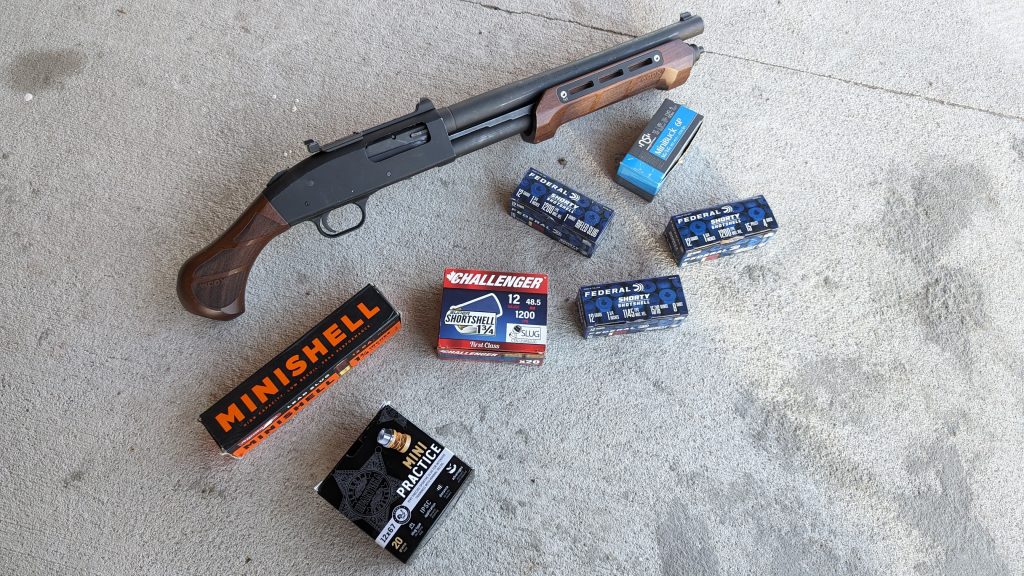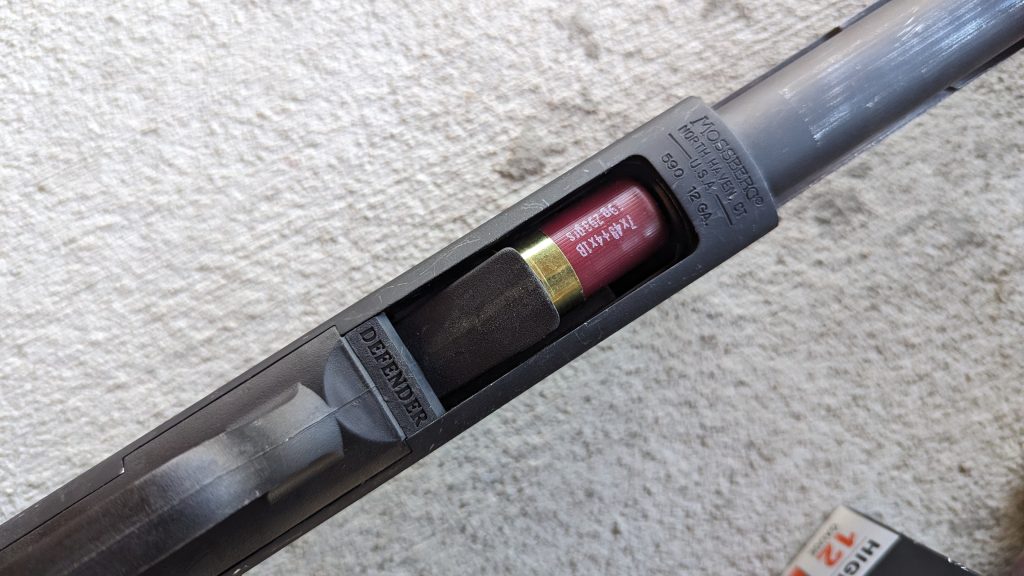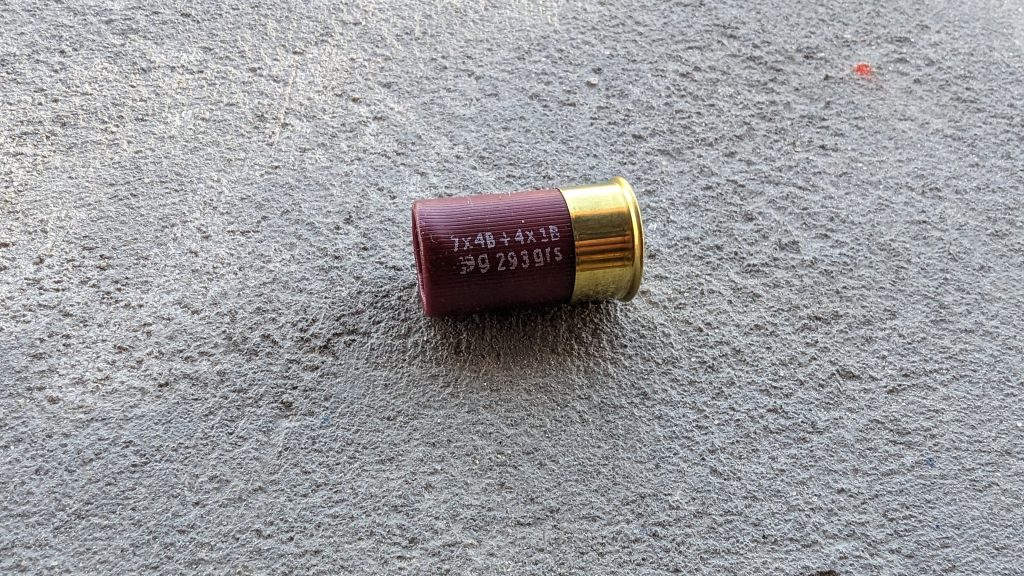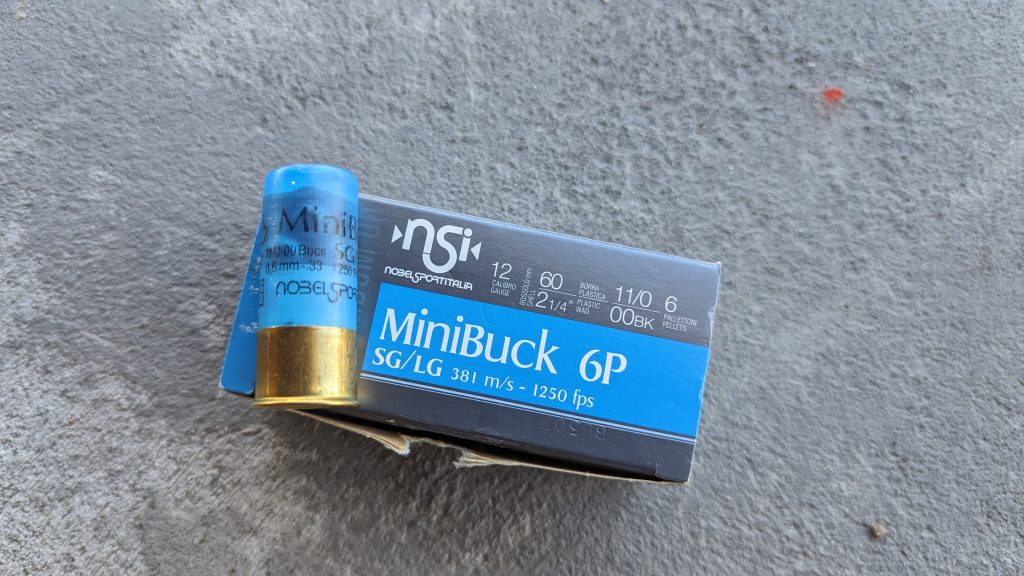
It seems that mini shells are everywhere these days. Ever since the Mossberg Shockwave and the Remington TAC-14 dominated the market for a few years, mini shells have been proliferated.
These micro-sized shotgun shells come in a few different sizes. Mini shells are exclusively a 12 gauge option and anything smaller than 2.75 falls into the mini shell category. I’ve shot these things a lot and have samples from various companies and have done a lot of personal testing, so here’s what I hope will be a useful guide to the world of mini-shells for shotguns.
Why Mini Shells?
There are a few advantages to these micro-sized 12 gauge shells. First, they expand the capacity of a tube-fed shotgun. They can nearly double the capacity, which is nice for what’s typically described as a low-capacity weapon. These shells have low recoil and are very easy to control. That makes them a great round for training new shooters and for use with ultra-light single-shot shotguns.

It’s Not All Good
Mini shells mean a mini load. You can’t get the same amount of pellets in a smaller shell. The point of a shotgun is to throw lots of pellets at a target to hit it with multiple projectiles. Fewer projectiles mean fewer hits.

There can also be reliability issues. Only one of the many mini shells runs in semi-automatic shotguns. In most pump action guns, they can have cycling issues. In single- and double-barrel guns, they work flawlessly.
Reliability Fixes
With that in mind, the Mossberg shotguns tend to work well with mini shells with the right adapter. There are a few fixes and options to make mini-shells work in Mossberg 500 and 590 series shotguns. This includes the Opsol Mini Clip, an easily insertable and removable adapter that makes running mini shells easy.

Mossberg also makes their S series guns. The 590S series will cycle any sized round. You aren’t limited to just the 1.75-inch shells. Additionally, Defender Tactical makes a tongue that’s easy to install. This tongue allows you to use any length shell with your normal Mossberg series shotgun.
The Current Crop
Let’s take a peek at the mini shells currently on the market for your shotgun’s consumption.
1.75-Inch Shells
The most popular mini shells are the smallest of the group. The 1.75-inch variety kicked off the mini shell phenomenon and Aguila gets all the credit. After Aguila produced the original mini shell, they took off from there. They even got a set of SAAMI specs. Aguila did well and numerous competitors have jumped in to challenge their dominance.
Federal is the most common. A company called Challenger gave them a run for the money, but they’ve gotten hard to find. Mason Munitions also produced various mini shell loads, but they haven’t had any in stock for quite a while.
In 2024, the two main makers of mini shells are Federal and Aguila. Both make loads with buckshot, birdshot, and slugs. While they produce the same kinds of loads, they do things differently, and that’s worth mentioning.
Birdshot
Of the various 1.75-inch loads, I think the birdshot loads are surprisingly handy. If you are hunting small game, these mini shells work pretty well. They are much smaller and lighter than most birdshot loads. For 12 gauge shotguns and maybe disaster prep, these mini shells are light and easy to tote. Perfect for the survival scenario and taking birds, squirrels, and other small game.
Aguila Birdshot
Aguila offers a ⅝-ounce load of 7.5 shot. It moves at 1,175 feet per second. This light load isn’t going to blow your mind, but it will kill a bird or squirrel at close range.
Federal Birdshot
Federal uses a nearly full ounce of lead, their 15/16 of an ounce of number eight shot. It’s moving at 1,145 feet per second. It’s small shot, but more by weight. It has a little more recoil, but it’s still laughably light.

Buckshot
Buckshot takes us into larger game and defensive applications. The big question you need to ask is whether it’s worth it. Is a reduced load worth the trouble? One of the big benefits of a buckshot load is eight 9mm-sized pellets hitting the target at one time. When we shrink the shells to 1.75 inches, we ssee a much smaller pellet and load.
Neither load is perfect. I’d mix elements of both loads to create my preferred defensive mini-shell load. I wouldn’t personally use either, and I tend to stick to Federal Flitecontrol in a full-length shell.
Aguila Buckshot
The Aguila buckshot load is a mixed load that blends #4 shot and OO buckshot. You get seven #4 shot pellets and four pellets of #1 buckshot. Both are capable pellets moving at about 1,200 feet per second. That load will likely stop a threat, but doesn’t provide the same major damage that 00 buckshot will.

The main problem with the Aguila load is consistency. It patterns widely, but the real problem is its lack of consistent patterns. Sometimes, it patterns high, other times, it patterns low. Maybe the pellets go into a horizontal line and maybe they create a big circle. Who knows? It varies from shell to shell. It’s tough to say. At ten yards, it might fully stay within the body of a threat that’s squared up to you.
Federal Buckshot
The Federal load keeps things simpler. It’s one pellet size, #4 shot. It packs 15 #4 pellets into a 1.75-inch shell. Number 4 is great for coyotes and only okay for defensive use. It’s not always guaranteed to reach deep enough to hit the vitals. It’s right on the line of being acceptable for defensive use. The pellets move at 1,200 feet per second.

The pattern is wide enough to cover a piece of standard printer paper at ten yards. That’s wide for a shotgun, but the Federal loads deliver consistent patterns. Round after round showed consistency and delivered round after round of a somewhat wide but consistent pattern.
1.75 Inch Slugs
The 1.75-inch slugs are the most capable of the loads. These big, heavy slugs perform a bit like .44 Mangum rounds. From a long gun, the recoil is light, but they still hit hard and create a nice big hole in a threat. If I had to use a 1.75-inch mini shell for personal defense, I’d choose slugs.
Aguila
Aguila slugs are ⅞ of an ounce and move at 1,300 feet per second. That’s a hefty load for a mini shell slug. The main problem you have with the Aguila slugs is a lack of accuracy. Much like their buckshot, they lack consistency. At 25 yards, I wouldn’t trust them to hit the target reliably. They skew inches to the left and right of the target. For that reason alone, they’re a no-go for use anywhere but the range.

Federal
With the Federal slugs, we get an ounce of lead at 1,200 feet per second. Better yet, we get great accuracy. At 25 yards, they form one ragged hole in the target. At fifty yards, the group is still plenty acceptable. This makes them a great medium-range tool, but also a way to expand the capacity of a properly equipped pump gun in a state that might not be friendly to magazines that hold more than ten rounds.

Two-Inch Slugs
A Ukrainian Company called Takho produces a series of two-inch-long shells loaded with slugs. These two-inch slugs have the phrase Practical Shotgun written across the box and seem to be aimed at competition use. Maybe it’s a way to skirt the rules by increasing capacity during competition shoots. These are ¾-ounce slugs and the speed isn’t listed. I don’t think they are moving fast judging by their recoil.

The Takho mini shells let you fit two extra rounds into the tube of most shotguns. They even cycle in the majority of pump-action shotguns. They won’t cycle in semi-auto actions. They also have trouble with skeletonized shell lifters. The lifters in the Mossberg 500 and 590, for example, aren’t very friendly to these shells. Toss them in an 870, a Benelli Super Nova, or old Winchester 1300, and you’re good to go from my experience.
According to the box, the maximum range is 45 meters or about 50 yards. Within 50 yards, they’re pretty accurate. I could create a clover leaf-like group with ghost ring iron sights and a supported position. These are fun for pump guns, but not super handy as slugs with their limited range.
2.25-Inch Rounds
I’ve only run across one current production 2.25-inch round, and it’s tough to come by. It’s from Nobel Sport. These 2.5-inch buckshot loads are by far my favorite mini-shells. I’ve heard that Herter’s used to have a 2.25-inch shell, but sadly, they seem to be out of production. The Nobel Sport load can be tough to find, too.
I love this round for a few reasons. It seems to be the perfect length to guarantee function. The Nobel Sport loads run fine in pump guns and — get this — even in semi-auto shotguns. They run fine in my Benelli M4, my 930 SPX, my 940 JM Pro, and the Savage Renegauge. They cycle without a single problem.

They have six 00 pellets moving at 1,250 feet per second. That’s a decent payload for defensive use. The load has very low recoil, making it easy to control, and you can fit an additional round into the tube. I really wish Winchester, a brand famous for kooky shotshells, would make some 2.25-inch shells. My dream load would be an eight to ten-pellet No. 1 load.
To me, this is the most viable mini shell…even if it’s not so mini.
Final Thoughts
Mini shells are neat and fun and have some practical uses, but they won’t replace standard 2.75-inch shells for most purposes…at least for me. I’d love to see a 2.25-inch round for pistol grip-only firearms like the Shockwave. For shotguns with stocks, full-length rounds like the Federal Flitecontrol are the ones for me. Still, being able to shove nine rounds into a Shockwave and fire with barely any recoil will always be fun.
